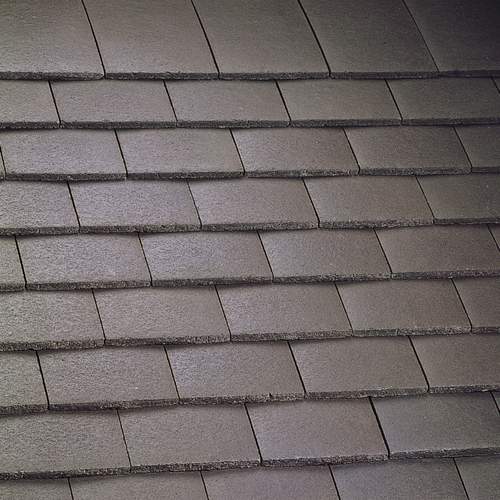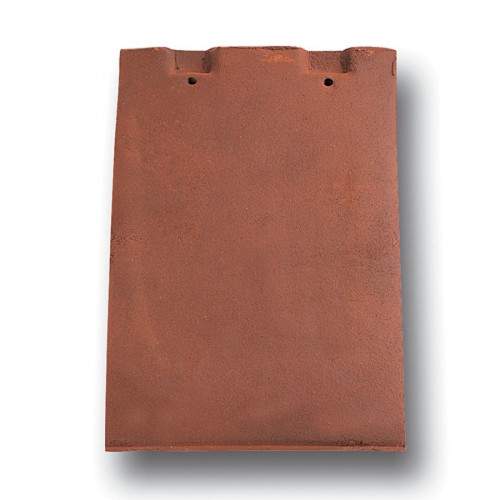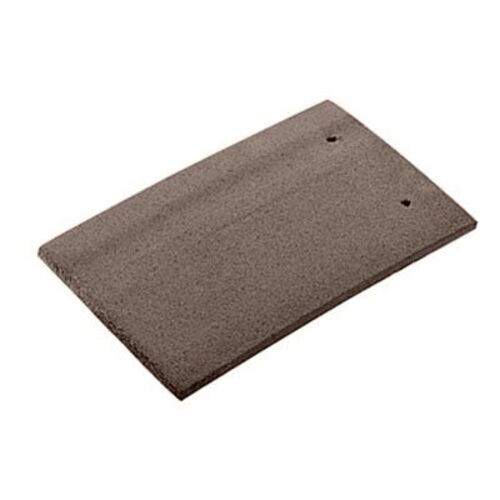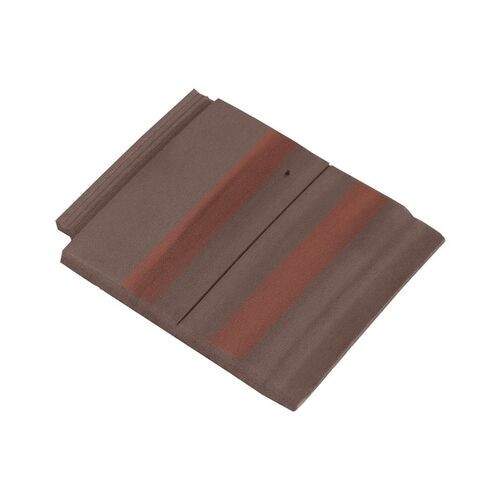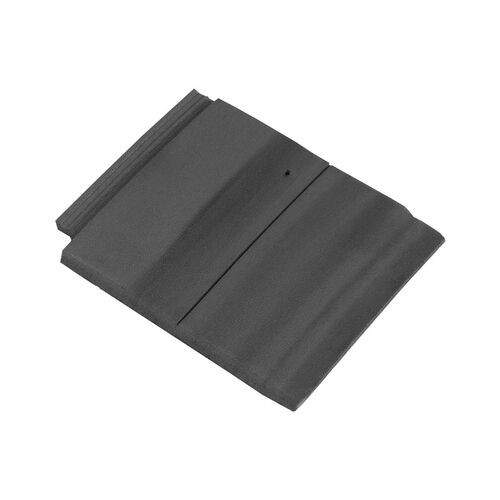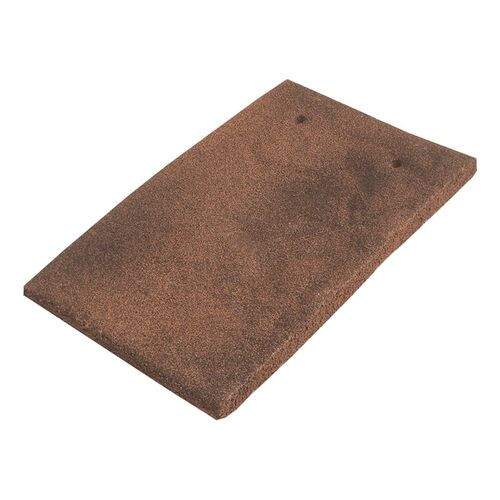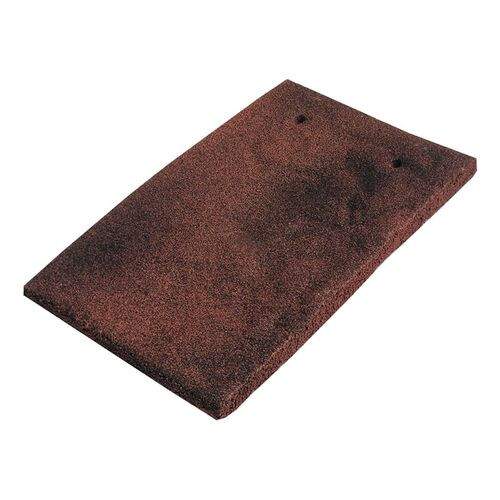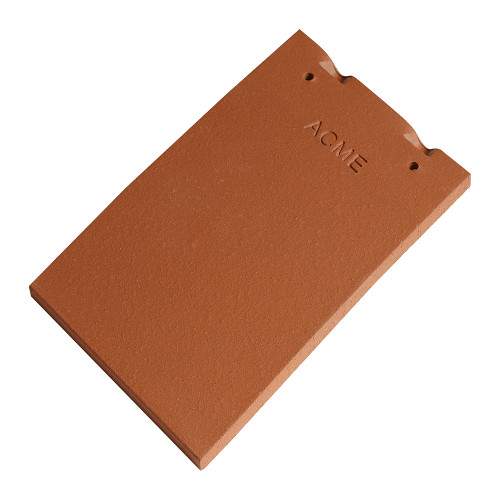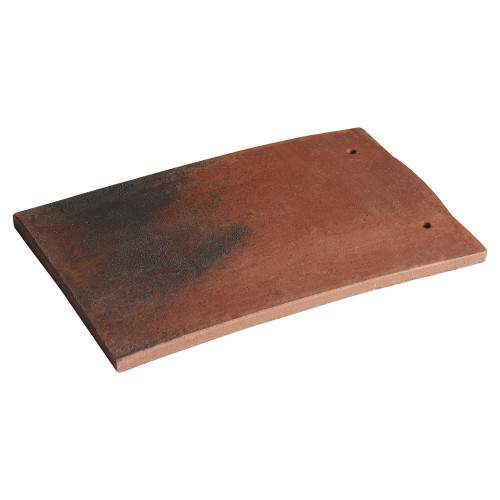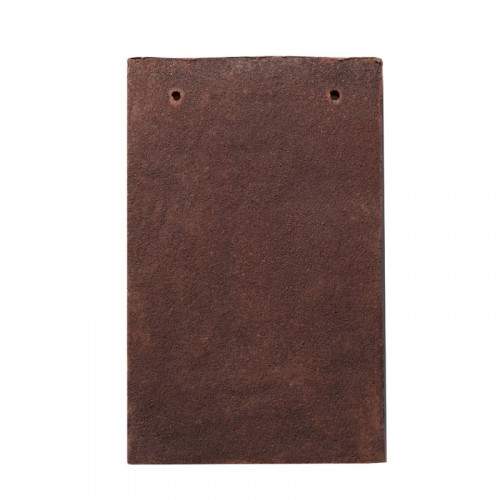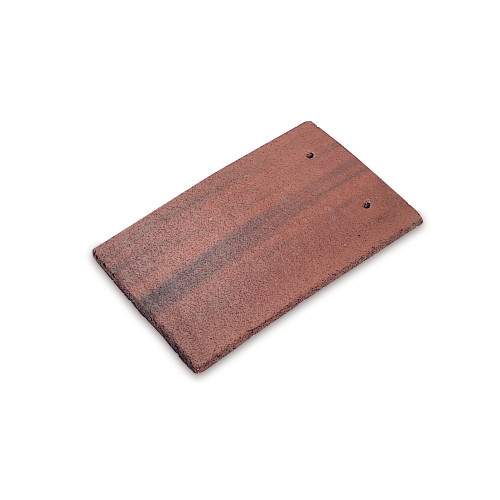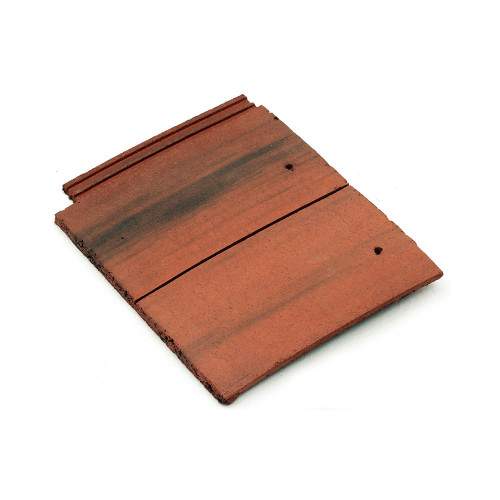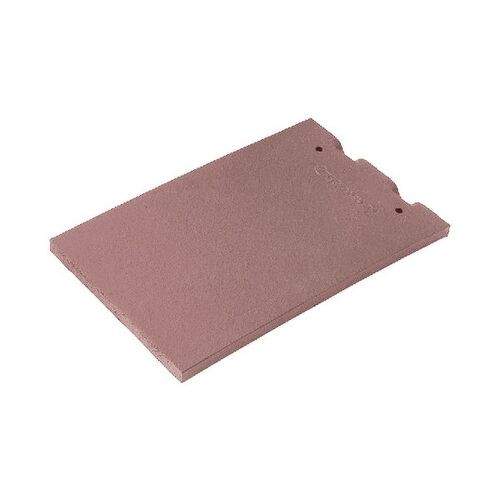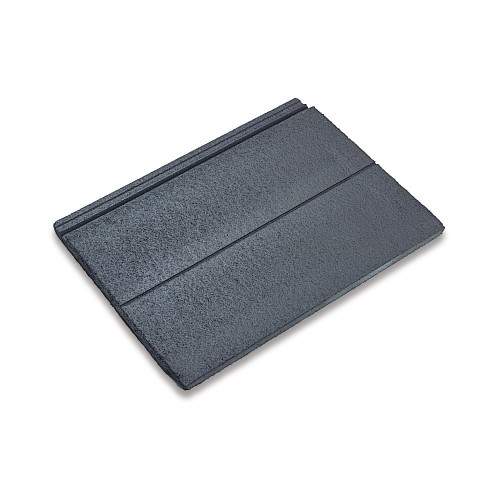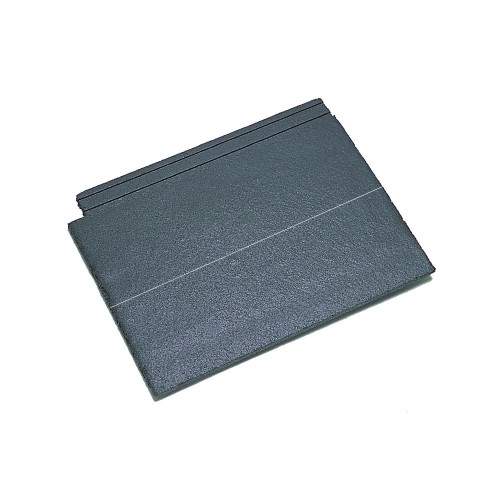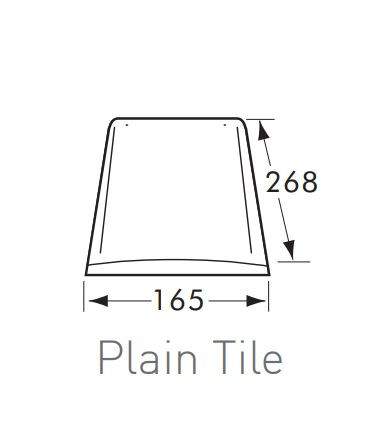Roof tiles come in many forms, but one that has always been around is the common plain roof tile. A simple tile that is exactly what its name suggests – plain! Their widespread use throughout the UK has been part of traditional house builds for many years and continues to bring a charming style to each property. Through this guide, you can understand the function of plain tiles and understand much more about their benefits and limitations.
Table of contents:
- Plain roof tiles
- Materials
- Plain tile roofing costs
- Roofing tile types
- Minimum roof pitch for plain tiles
- How many plain roof tiles do I need?
- Installing plain roof tiles
What is a plain roof tile?
The plain tile’s main function is being part of the roof which is applied to stop rain and other weather from getting inside the property. Though, as a general bonus, it comes with a familiar appearance and is cost-effective.
Materials for plain roof tiles
Due to their appearance, they can be applied in a variety of ways and are available in the following materials:
Clay
The use of clay tiles has been around for thousands of years. Their durability has been a top reason as to why they have been used for so long, as well as the cost being favourable. They also have an appealing look that is memorable and can fit with many different types of properties.
Clay is also a flexible material. It can be moulded into numerous different sizes to suit low or high-pitched roofs. This allows for easy repairs as the clay can be replaced to fill in gaps if they become damaged in the future.
It is important to note that clay tiles are one of the lighter materials, so they absorb less water than materials like concrete or another dense source. They have also been known to last for over 60 years, with an average of 30.
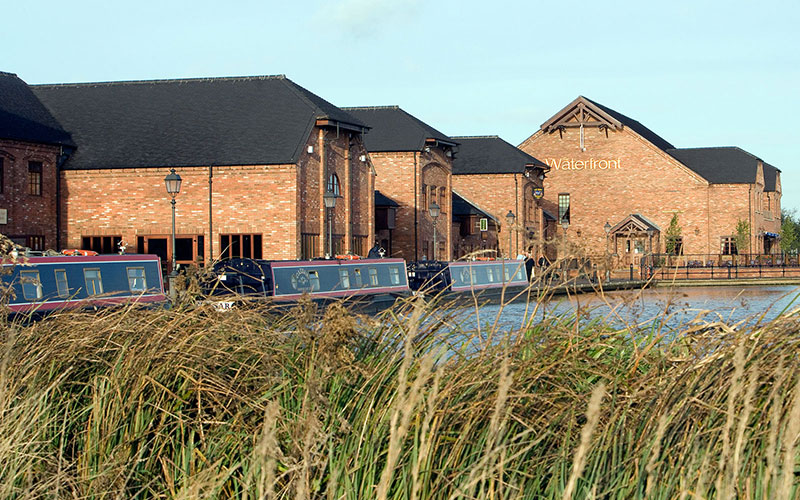
Concrete
A concrete tile’s first noticeable feature is its greater durability. They have not been used for as long as clay tiles, but have taken off as another common material used in plain tiling in the past century. They can be used in place of clay tiles, while still mimicking the traditional clay design.
The concrete tile is also easier to install and is another cost-effective solution. Due to their profiles, you can apply concrete tiles on many different roof pitches and have a smooth or rough-looking surface depending on your desired appearance for the home.
Concrete roof tiles can last for similar time spans to clay tiles. The difference is that concrete tiles will need quicker repairs than clay as they can succumb to wind and rain more than traditional clay solutions.
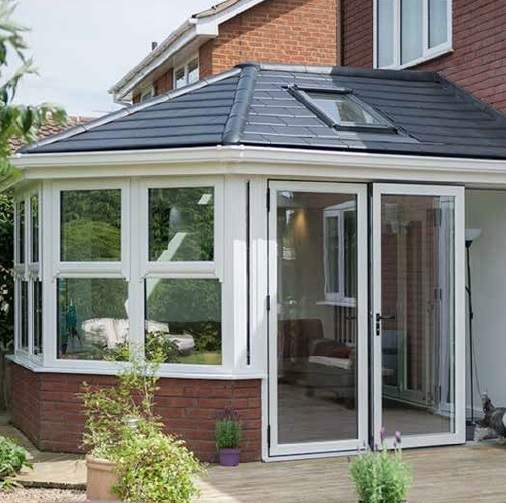 Plastic
Plastic
The use of plastic tiles allows you to have an eco-friendlier approach. There are many plain tiles manufactured from recycled plastics, allowing you to have lighter products to apply alongside the environmental alternative. They also come in a wide range of colours and sizes, though you can opt for the look of a traditional roof if that takes your fancy.
What are the costs of plain roof tiles?
Depending on their manufacturing and how main you need, costs will vary greatly. Here at Roofing Superstore, we have a wide array of different plain roofing tiles for you to purchase. You can also review samples of selected items. For a brief example of potential roof tile costs:
| Tile | Material | Cost |
| Marley Acme Single Camber Clay Plain Roof Tile - Century | Clay | £0.95 inc VAT |
| Marley Concrete Plain Eaves/Top Roof Tile | Concrete | £0.68 inc VAT |
| Redland Rosemary Clay Classic Roof Tile Smooth - Red | Clay | £1.10 inc VAT |
| Redland Concrete Plaintile Roof Tile Smooth - Breckland Brown | Concrete | £0.79 inc VAT |
If you’re looking for more information, you can find out more about roofing tile costs in our Help & Advice article.
Types of plain roof tile
Plain roof tiles are available in all sorts of unique shapes and designs. Tiles can come in standard or tile and halves. Tile and halves are used to save the need to cut standard tiles in half to fill in space. Not only this, but it also allows the finishing appearance to be a lot smoother which can result in better kerb appeal.
They also come in a wide range of colours to offer a vibrant and unique appearance for each home. Choose from a selection of styles as:
Club tile
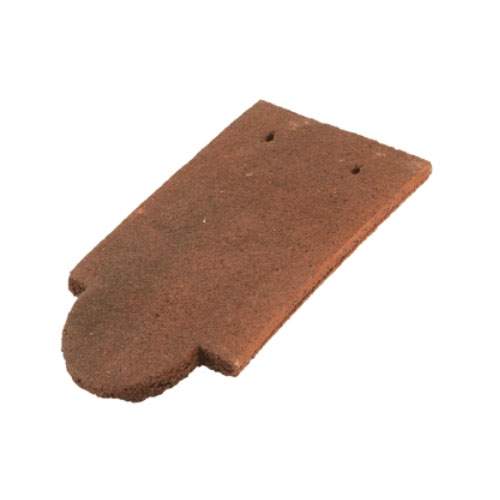
Fish tale tile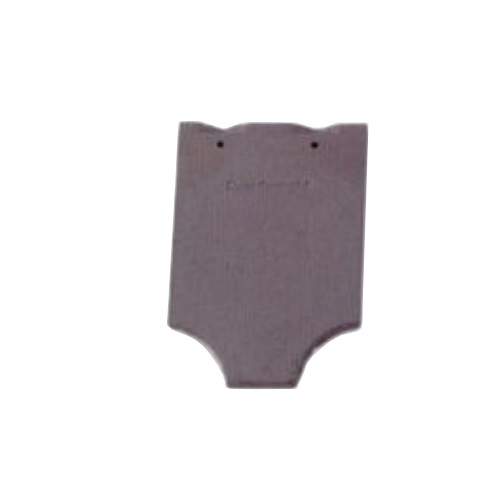
Bullnose tile
You could even combine different tiles to make up a widely unique roof style for your property. it all depends on what cost you desire and the look you want at the end of the project.
Fittings will also be key in the completion of a new roof. Roofing tile shapes are not only flat but also curved or rigid for all angles and edges of a roof. You will need to look at what these additional plain tile fittings; bonnet hip tile, arris hip tile, valley tile, cloaked verge tile, mansard tile, eaves/top tile, mansard tile, half round ridge, third round hip ridge, angle ridge and Hogsback ridge. Check out our range of roof tiles and fittings to discover the unique types available to you!
What is the minimum pitch for a plain roof tile?
This will depend on the manufacturer. For a standard pitched roof, however, tiles are recommended to be placed on at least a 30-35°. Anything lower would be considered a low-pitched roof which will require a different approach. You can find out more about low-pitched roofs via our low-pitched roofing guide.
How many roof tiles do I need?
To find out how many tiles you need to cover the whole roof, you will need to measure the roof as well as determine the pitch you desire. The lower the roof, the fewer tiles you will need.
How to install plain roof tiles
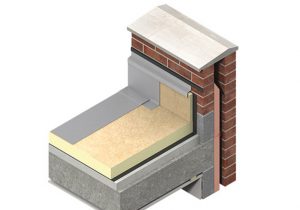 The installation will depend on the type of material. General things you will need to ensure, however, is that fittings comply with British Standards and that you have everything you need.
The installation will depend on the type of material. General things you will need to ensure, however, is that fittings comply with British Standards and that you have everything you need.
You will also need to prepare the pre-existing roof by removing any existing roofing materials. Make sure any damages are repaired otherwise, this can affect the way the roof tiles are applied and function.
You can also read our handy Help & Advice guide on how to tile a roof.
Roof insulation
Another consideration is roof insulation. If you have the potential to do so, add an underlay. These come in a wide range of types, including impermeable or vapour permeable. You can also use breather membranes!
We have a guide on how to install breathable roof membrane to help with your project.
If you would like more information about our plain tiles or other products, you can give us a call on 01752 692 760 or open the live chat for a discussion with our experts.

